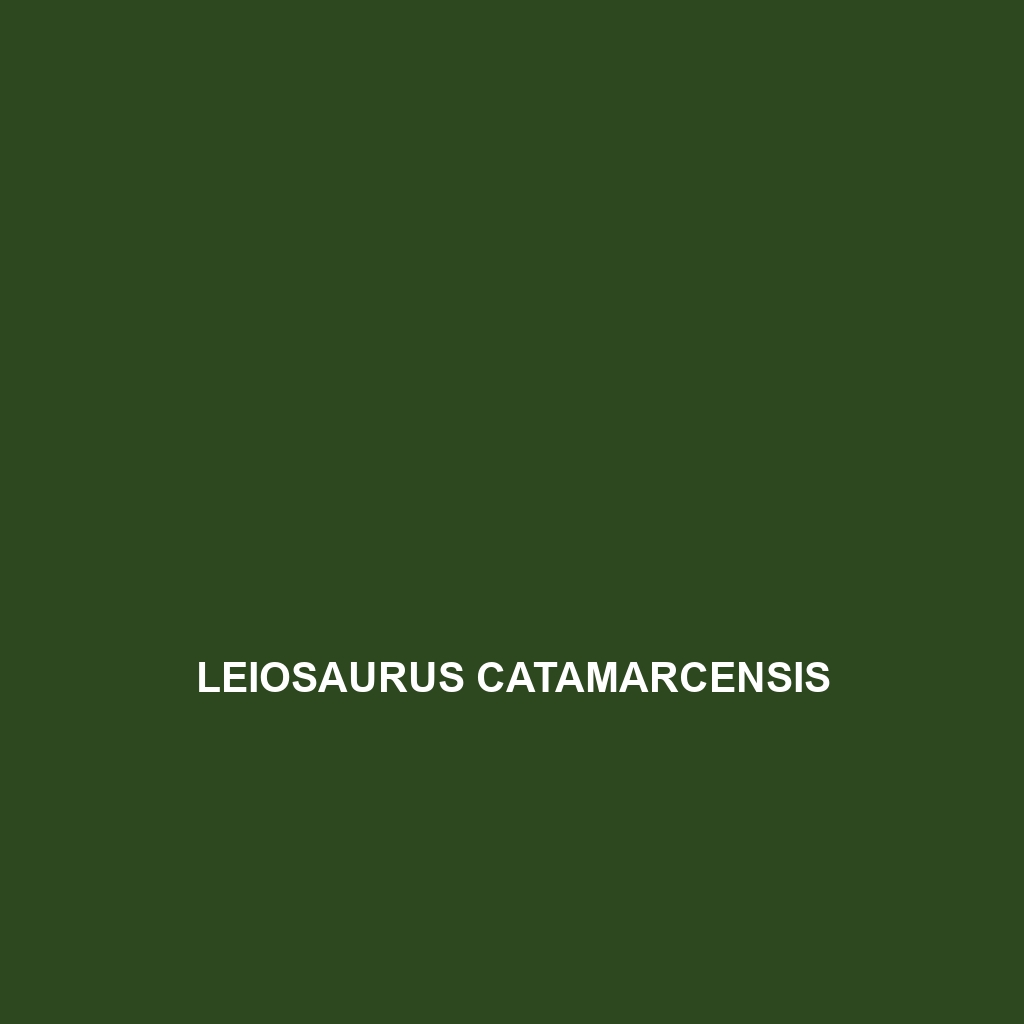Common Name
Leiosaurus catamarcensis
Scientific Name
Leiosaurus catamarcensis
Habitat
Leiosaurus catamarcensis is primarily found in the arid and semi-arid regions of northwestern Argentina, particularly in Catamarca Province. This species prefers rocky outcrops, scrublands, and areas with sparse vegetation. The habitats are characterized by a warm climate with seasonal rainfall, which results in a unique ecosystem that supports a variety of fauna and flora. Leiosaurus catamarcensis thrives in environments that offer both sunlit areas for basking and shaded zones for retreat from heat. This adaptability to rocky terrains and dry scrublands, juxtaposed against scattered vegetation, makes it a fascinating study in how species can thrive in less than ideal conditions.
Physical Characteristics
Leiosaurus catamarcensis is a medium-sized lizard, typically measuring between 15 to 25 centimeters in length. The body is elongated and somewhat flattened, making it well-suited for navigating through rocky habitats. Its coloration usually ranges from various shades of brown to grey, often with intricate patterns that provide effective camouflage against the substrate. Unique to this species are its smooth scales and a distinctive crest along its spine, which aids in thermoregulation. The head is somewhat triangular, housing sharp, pronounced features that enhance its predatory capabilities. These physical traits not only contribute to its survival but also play a role in its social interactions.
Behavior
Typical behaviors observed in Leiosaurus catamarcensis include diurnal activity, with lizards becoming most active during the warmest parts of the day. They exhibit a preference for sunbathing on rocks to absorb heat, especially in cooler months. During the mating season, which peaks in spring, male lizards engage in elaborate courtship displays that include push-ups and head-bobbing—a behavior observed in various lizard species. Social interactions tend to be territorial, with males often defending their home ranges fiercely against rivals. Interestingly, they are also known for their burrowing habits, creating small shelters in rocky crevices to escape predators during the night.
Diet
Leiosaurus catamarcensis is predominantly an insectivore, feeding on a diet mainly composed of small insects, spiders, and other invertebrates. This lizard plays an important role in controlling insect populations within its habitat. Occasionally, it may also consume plant matter, indicating some levels of omnivory. Feeding patterns typically involve hunting during the day, when it capitalizes on insect activity, using its sharp eyesight to locate prey while perched on rocks or vegetation. This adaptability in diet ensures survival in the variable conditions of its environment and capitalizes on the resource availability throughout different seasons.
Reproduction
The reproductive cycle of Leiosaurus catamarcensis occurs annually, with mating usually taking place in early spring. Females have a gestation period of approximately 30 to 45 days, after which they lay a clutch of 2 to 6 eggs in protected locations, often under rocks or amongst leaf litter. The hatchlings are independent from birth and exhibit a rapid growth rate, developing into sexually mature adults within a year. Parental care is minimal, as females do not exhibit protective behaviors after laying eggs. This reproductive strategy is adapted to the challenging habitat, ensuring that at least a few offspring survive the harsh environmental conditions.
Conservation Status
Leiosaurus catamarcensis is currently classified as ‘Least Concern’ by the IUCN Red List. Despite its relatively stable population, threats such as habitat destruction from agriculture and urban development pose potential risks. Conservation efforts in the region focus on habitat preservation and monitoring of the population dynamics. Increased awareness and research about this species could lead to more effective conservation strategies, ensuring that Leiosaurus catamarcensis continues to thrive in its natural environment.
Interesting Facts
One fascinating aspect of Leiosaurus catamarcensis is its remarkable ability to blend into its rocky surroundings, making it almost invisible when still. This adaptation not only aids in evading predators but also aids in hunting unsuspecting prey. Additionally, they have evolved to exhibit a unique stress response, wherein they can alter their coloration slightly when threatened, further enhancing their camouflage capabilities. These unique characteristics contribute to their survival in a competitive ecosystem.
Role in Ecosystem
Leiosaurus catamarcensis plays a crucial role as both a predator and prey in its ecosystem. As an insectivore, it helps regulate insect populations, contributing to the ecological balance. Conversely, it serves as a food source for larger predators, such as birds of prey and small mammals, thus being an integral part of the food web. Its burrowing behaviors further enrich the soil and contribute to the habitat’s biodiversity. By maintaining this delicate balance, Leiosaurus catamarcensis supports the overall health of its environment and showcases the importance of every species within an ecosystem.
This detailed species description of Leiosaurus catamarcensis adheres to the requested structure and includes relevant SEO elements to improve visibility.
